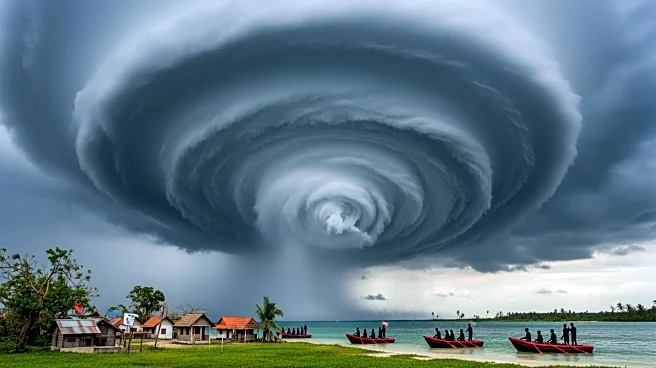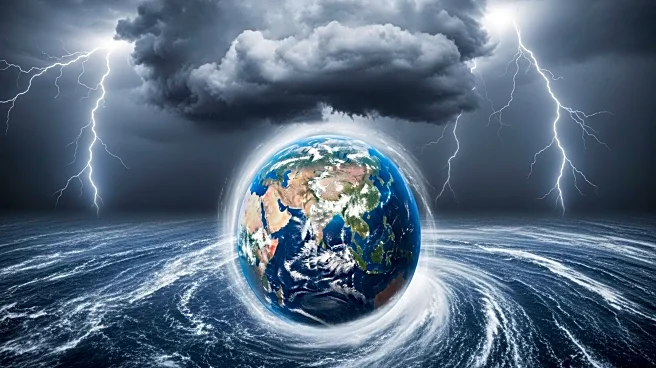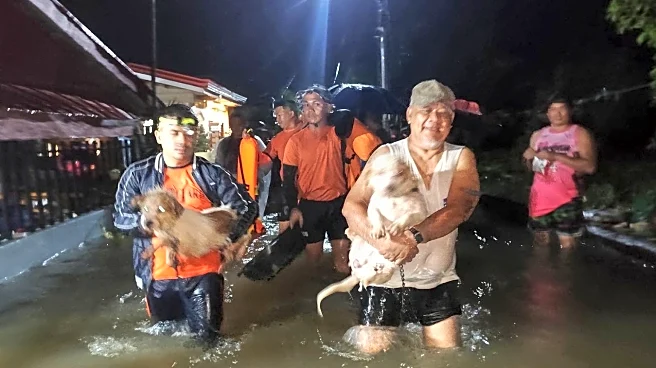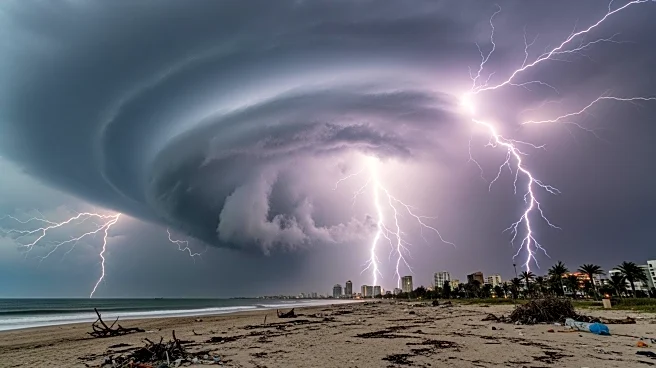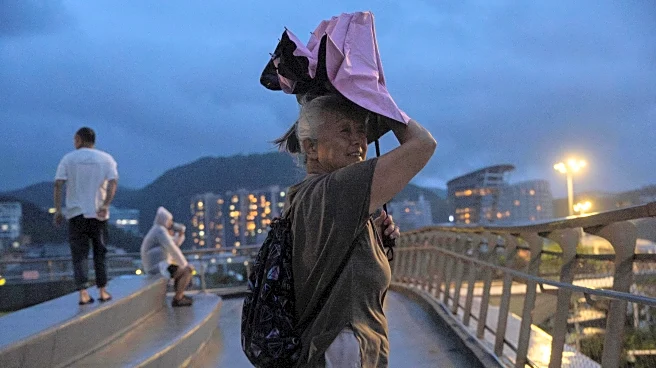What's Happening?
A tropical storm named Bualoi has swept through the central Philippines, resulting in at least 10 fatalities and the evacuation of over 433,000 individuals from areas prone to landslides and flooding. The storm, which made landfall in San Policarpo, Eastern Samar province, brought sustained winds of 110 kph, causing widespread power outages, toppling trees, and triggering minor landslides. The disaster-mitigation agency reported that the storm also blew roofs off houses and a grandstand. In response, government emergency shelters were activated, particularly in Albay province, where residents near the Mayon volcano were relocated due to potential volcanic mudflows. The storm has left several roads impassable, complicating relief efforts, and has led to the closure of ports, hindering the delivery of aid.
Why It's Important?
The impact of Tropical Storm Bualoi highlights the vulnerability of the Philippines to natural disasters, exacerbated by ongoing corruption scandals involving infrastructure projects. Allegations of kickbacks in flood control and infrastructure projects have sparked public outrage, as these projects are crucial for mitigating the effects of severe weather events. The corruption has reportedly led to substandard and overpriced infrastructure, undermining the country's ability to withstand such storms. This situation underscores the need for transparent governance and effective disaster preparedness to protect the population and ensure timely and adequate responses to natural calamities.
What's Next?
As the storm moves towards the South China Sea, it is expected to strengthen into a typhoon, potentially affecting northern Vietnam. In the Philippines, clearing operations are underway to restore access to affected areas and reopen ports for aid delivery. The ongoing investigations into the corruption scandal may lead to further political repercussions, as President Ferdinand Marcos Jr. has vowed to hold those involved accountable, including his allies. The outcome of these investigations could influence future infrastructure policies and disaster management strategies in the country.
Beyond the Headlines
The situation in the Philippines serves as a stark reminder of the broader implications of climate change and governance on disaster resilience. The combination of natural disasters and systemic corruption poses significant challenges to sustainable development and public safety. Addressing these issues requires a multifaceted approach, including strengthening institutional frameworks, enhancing transparency, and investing in resilient infrastructure to better withstand the increasing frequency and intensity of weather-related events.

